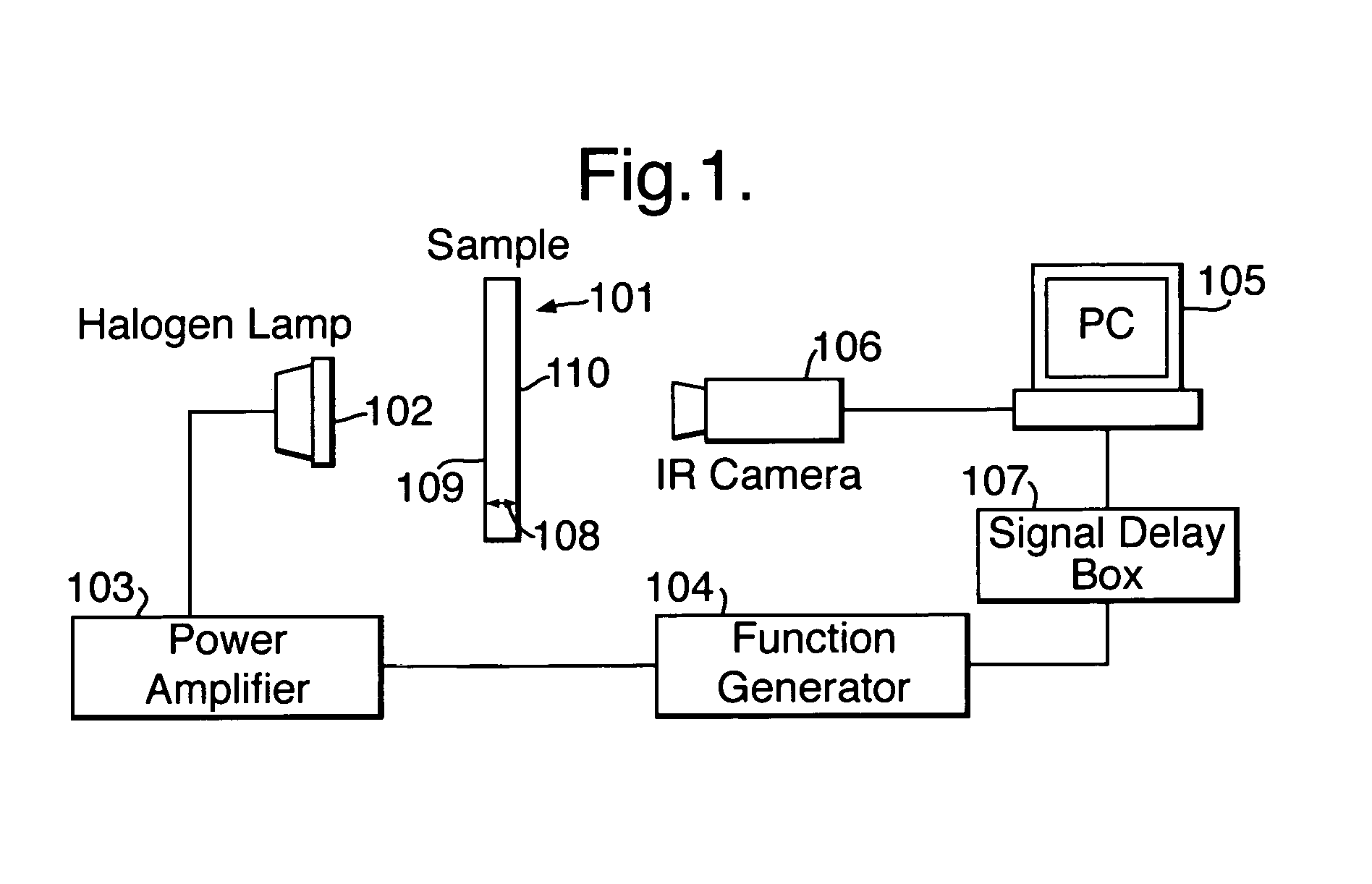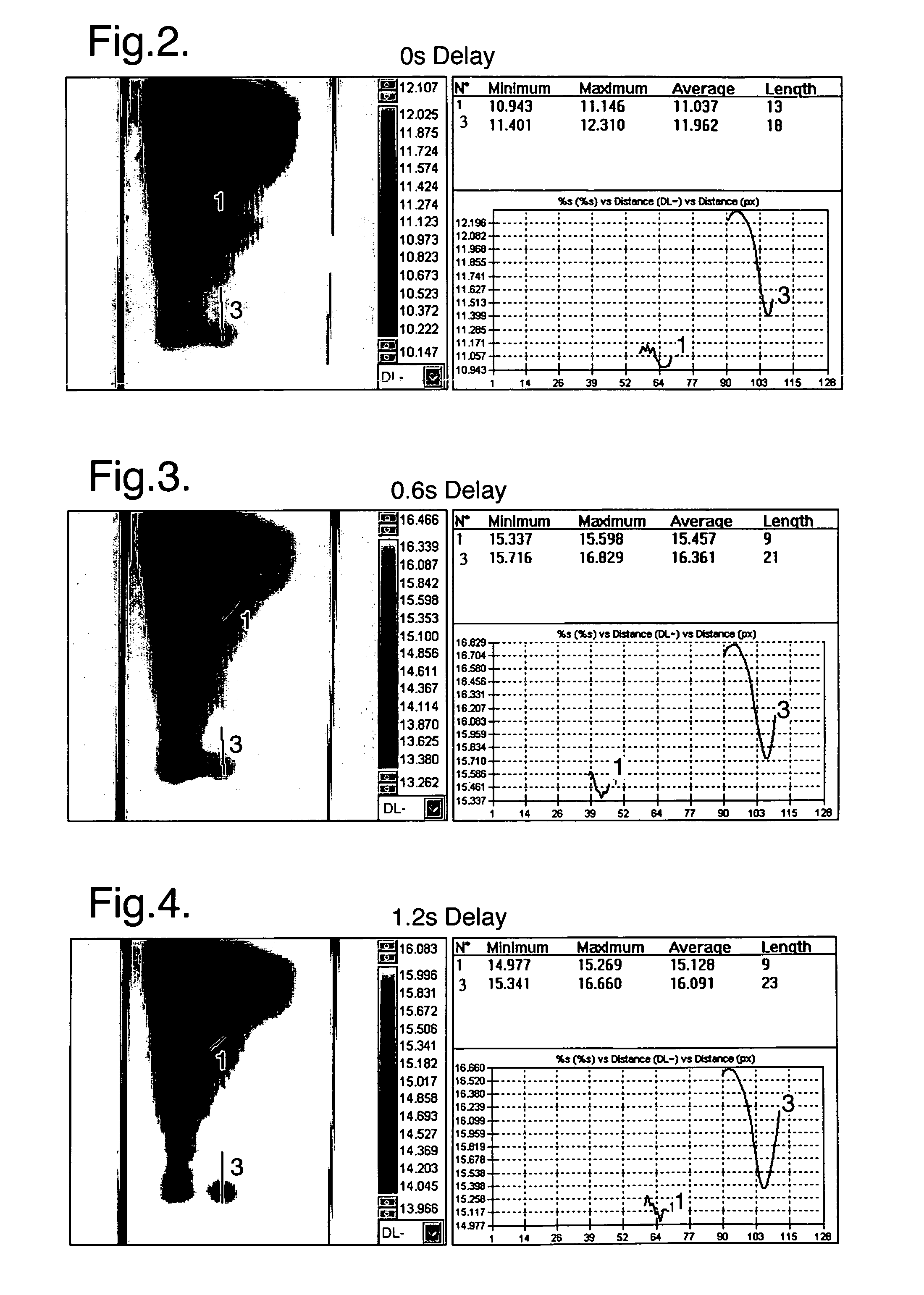Material analysis
a technology of thermography and material analysis, applied in the field of material analysis, can solve the problems of poor signal-to-noise ratio, system does not allow thermal lag, and takes an appreciable amount of time for heat pulses
- Summary
- Abstract
- Description
- Claims
- Application Information
AI Technical Summary
Benefits of technology
Problems solved by technology
Method used
Image
Examples
Embodiment Construction
[0029]In FIG. 1, a sample 101 of the material to be analysed is positioned with one surface 109 facing a halogen lamp 102. An opposite surface 110 of the sample 101 faces an infra-red camera 106. The thickness of the sample 101 between the two opposite surfaces 109 and 110 is indicated by arrows 108. Although in the example of FIG. 1 the thickness 108 of the sample material 101 is less than the length of the sample, in this specification the term “thickness” is intended to mean a distance between any two generally opposed surfaces of a material which is to be analysed.
[0030]The halogen lamp 102 is connected to a power amplifier 103 driven by a function generator 104 which in use switches the halogen lamp 102 on and off at a predetermined frequency provided by the sinusoidal function gen rator 104. The lamp 102 emits heat pulses in a direction mainly towards the surface 109 of the sample 101 adjacent to the lamp.
[0031]The function generator 104 is also connected via a signal delay bo...
PUM
 Login to View More
Login to View More Abstract
Description
Claims
Application Information
 Login to View More
Login to View More - R&D
- Intellectual Property
- Life Sciences
- Materials
- Tech Scout
- Unparalleled Data Quality
- Higher Quality Content
- 60% Fewer Hallucinations
Browse by: Latest US Patents, China's latest patents, Technical Efficacy Thesaurus, Application Domain, Technology Topic, Popular Technical Reports.
© 2025 PatSnap. All rights reserved.Legal|Privacy policy|Modern Slavery Act Transparency Statement|Sitemap|About US| Contact US: help@patsnap.com



